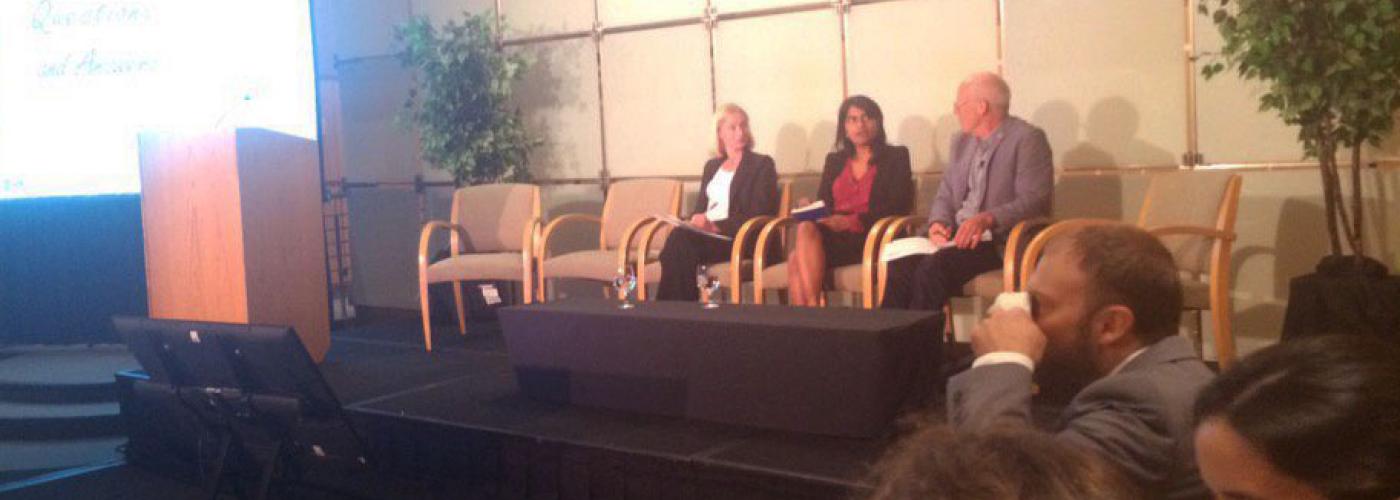Rural Poverty Escapes: Q and A Session With Researchers
Image

The joint Microlinks-Agrilinks conference held this past September, Sustainable Poverty Escapes, invited researchers from the Overseas Development Institute to share their work on resilience and risk factors in poverty escapes through the Leveraging Economic Opportunities (LEO) activity. Presenters Vidya Diwakar, Lucy Scott, and Andrew Shepherd discussed findings from their research on poverty escapes from rural Bangladesh, Ethiopia, and Uganda.
Although they were able to take questions from the crowd gathered at the Ronald Reagan Building, there were audience questions regarding issues such as gender-based violence, access to energy, and livestock that they did not have time to answer. The Agrilinks team sent these remaining questions to the presenters, who provided the answers below. To learn more about the details which were discussed during the event, explore the post-event resources uploaded on the after-event resources page.

Vidya, Lucy, and Andrew on the stage discussing audience questions. Photo: Katherine Morgan.
The findings on diversification are very interesting. Was the study able to parse out whether non-farm agriculture labor increased sustainable escape from poverty, or does labor need to be non-wage to have an impact?
Yes, agricultural labor can certainly sustain escapes, but it depends on the wage rate. Bangladesh and other countries in South and Southeast Asia have recently seen increases in agricultural wage rates, which have helped to improve the living conditions of agriculture workers. From the qualitative research in rural Bangladesh, though, agricultural labor on its own wasn't a strategy sustained escape households followed, rather they combined this with own-account farming and sometimes even non-farm activities.
How can you incorporate access to energy and communication resources to the sustainability of people's rise from poverty?
This research didn't specifically investigate this. Other research highlights the importance of energy access for viable non-farm enterprises. Communication resources (mobile phone) emerged in the qualitative research as important for migration.
Did the research investigate how different types of livestock influenced sustainable escapes (i.e., meat cattle vs. dairy cows, goats, chickens, hogs, fish, etc.)? Are these types of livestock better predictors of a sustained escape than others?
No, the research didn't do this. Small ruminants—particularly goats and chickens—emerged as an important form of "insurance" from the qualitative fieldwork, often being sold as a means to cope in a crisis.
In the first Q&A period, Vidya said that participants in Bangladesh experienced drastic extreme escapes followed by extreme/drastic returns to poverty. Are there any indications of why? Any hypotheses?
As well as conducting analysis using the national poverty line, we also conducted limited analysis using the national extreme poverty line. 10% of all households experienced transitory poverty escapes using the national poverty line. Two out of five of those households experiencing transitory escapes actually started and ended the period in extreme poverty. They therefore saw sizeable improvements in their situation, with those improvements then being lost. Compared to those households experiencing transitory escapes—but not leaving a situation of extreme poverty and returning to extreme poverty—these households were less likely to own cultivable land, and also their heads were less likely to complete primary education.
To what extent is the availability of a middle class suburban customer base (i.e., middle-class) key to income generation?
Markets are important. However, this research didn't distinguish between the types of market demand. Rather, the qualitative research highlighted the importance of their being sufficient local demand in rural areas to support viable non-farm enterprises there, with successful agricultural production being the key element for ensuring local demand in rural areas.
Could you please discuss some of the details related to structured economic reforms and economic diversification?
One of our hypotheses is that Bangladesh has a much higher proportion of sustained escapers than rural Ethiopia and Uganda given the greater structural transformation of the economy there. In particular, there are jobs in garments, possibilities for internal and international migration, and a more vibrant non-farm economy. As a result of non-farm opportunities, along with labor market tightening through family planning and higher levels of educational attainment, rural agricultural wages have also risen in Bangladesh. In both rural Ethiopia and Uganda, non-farm opportunities and markets are much more limited.
What percent of female household heads had primary education and secondary education with sustained escapes? How did that compare to those female household heads with access to primary education?
In rural Ethiopia, under 1% of female headed households in the sample had completed primary education. I don't have the descriptive statistics for rural Bangladesh on hand. For female headed households in Uganda, 3% of heads of transitory escaping households had completed primary education. For female-headed sustained escapers this was 11%. Across countries, female-headed households completing secondary education was minimal. Though, given that the data for rural Bangladesh and rural Ethiopia is quite old, education attainment is likely to be much higher now.
Did you see any correlation between the reduction in poverty and the well-documented reduction in HIV/AIDS? Was this halving of poverty in any way influenced by this?
We didn't specifically investigate this. However the findings on disability from the panel data analysis include HIV as a chronic illness. These findings on disability were mixed in terms of how disability relates to achieving sustained escapes.
Would it be possible to look at the impact of USAID projects on churn?
Yes, it would be if M&E systems are designed to return to the same households over time, rather than drawing a new cross section of households to visit each time.
When we talk about weather-related risks, we are usually talking about bad weather causing reduced production/higher prices. But poor remote farmers also face risk from good weather, which can lead to extreme price drops. Is this a resilience issue? If so, what should be done?
Yes, the importance of selling crops at appropriate times, including through storing crops to sell them a few months post-harvest when prices were higher, emerged as an important strategy to sustain poverty escapes, i.e., being a market-oriented farmer.
To what extent did gender-based violence (GBV) emerge as a source of impoverishment or transitory poverty escapes? Was there evidence of resilience, i.e., sustainable poverty escapes as a result of leaving a violent relationship?
GBV wasn't measured in the household surveys and wasn't explicitly addressed in the qualitative work (finding out about GBV would normally involve longer-term fieldwork in order to gain the trust of respondents). None of the qualitative work highlighted resilience as a result of leaving a violent relationship, though there were instances from a few life histories of the opposite, i.e., being in a violent relationship driving a transitory escape.


